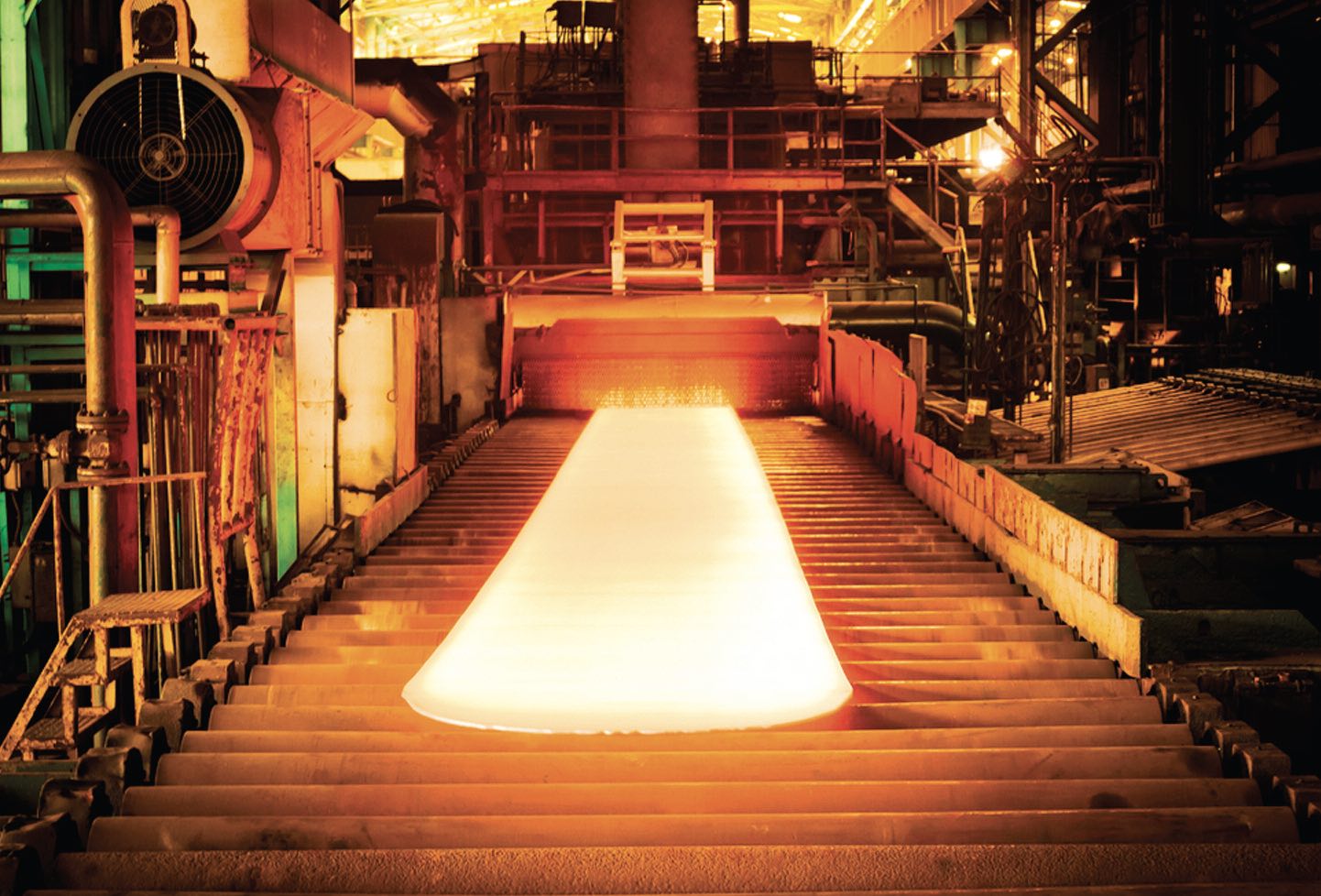The Lubrizol Corp.
Synthetic Industrial Gear Oil: The Importance of Achieving Multi-OEM Approvals
By Shubhamita Basu Ph.D., The Lubrizol Corporation | TLT CMF Plus November 2022
Modern gearboxes are becoming more compact and are expected to operate under severe conditions while meeting increased demand for higher throughputs. The use of synthetic industrial gear oils (IGOs) is gaining in popularity because they can extend oil drain intervals (ODIs) and subsequently reduce waste and maintenance cost while increasing uptime.
But not all synthetic IGOs are created equal. End users often have gearboxes manufactured by different original equipment manufacturers (OEMs) that require the IGO to meet different specifications. The inability of one IGO to meet all the key OEM specifications increases complexity and cost of operation for both the lubricant manufacturer and end users.
In this article, we will discuss what a top-tier synthetic oil looks like, why multiple key approvals are necessary and how the oil is formulated to meet them.
 Why IGOs Are So Crucial
Why IGOs Are So Crucial
Industrial gearboxes are ubiquitous—in mining equipment, steel mills, wind turbines and many other industrial applications. While the gearboxes provide the power that keeps this equipment functioning, they are also subjected to harsh environments and heavy loads that make operating conditions challenging. The IGOs present in the gearboxes must work under increasingly harsher conditions and will influence the durability of the industrial equipment.
The key focus of the market is on higher productivity and efficiency to allow for 24/7 operations while increasing power throughput in different operating conditions without any costly part failure or unplanned downtime. Under these harsh conditions, it is vital that IGOs provide improved component protection to ensure gearbox durability and life span while increasing the ODI. Additionally, IGOs must be compatible with different gearboxes and should be approved by leading OEMs to offer quality assurance. These market drivers are creating an increasing demand for higher-tier IGOs that deliver worry-free performance.
Meanwhile, the costs of gearbox failure are not just theoretical. For example, failure of a key gearbox at a steel mill can lead to a total production shutdown, lost output, lost revenue, cancelled contracts and associated maintenance costs. Taking this example one step further, if a main gearbox fails and shuts down the steel mill for two to three hours, the losses can easily go up to $200,000 per hour in production downtime, and $600,000 in production losses are never desired for any operation. And if more than one machine goes down, the costs become overwhelming.
Trends and Challenges for Modern IGOs
In addition to increased productivity and extended ODI, premium IGOs must offer improved bearing performance as most of the gearbox failure initiates at the bearing level, and IGOs with strong bearing performance can extend the life of the gearbox. Micropitting protection is another key parameter modern IGOs must offer. Micropitting is a fatigue phenomenon appearing on the surface, and when it progresses, it can lead to pitting and gear failure. IGOs offering superior micropitting-protection performance can help to prevent gearbox failure. White etching cracks (WECs) are initiated at subsurface levels and can make their way up to the surface and lead to pitting issues. Newer IGOs are expected to offer effective protection against WECs. Additionally, gearboxes are getting smaller while delivering higher power density leading to increased operating temperature for the IGOs, which can lead to oxidation that will threaten the IGO’s protective capabilities.
These market drivers are accelerating the adoption of synthetic IGOs, which can help the gearbox run cooler, improve efficiency and reduce the overall total cost of ownership. Furthermore, such synthetic IGOs can extend ODIs and can improve sustainability.
Key properties of a top-tier IGO, in addition to bearing and micropitting protection, are high load carrying capacity, improved thermal and oxidative stability, reduced operating temperature, compatibility with seals, paints and adhesives, and wet brake performance. Lastly, performance retention of the IGO over time is also essential to offer consistent performance.
As the major end uses like marine, wind and steel are adopting synthetic IGOs, a rapid growth in the synthetic IGO market is expected at the expense of mineral oil based IGOs. The synthetic IGO market is growing at a compounded annual growth rate (CAGR) of 5.2%, exceeding the growth rate of the overall gear oil market, which is growing at below 1% CAGR.
 How Key Specifications Play a Role
How Key Specifications Play a Role
Common industry specifications like DIN 51517-3, ISO 12926, CKSMP, AGMA 9005-F16 AS, AIST 224 and Chinese GB 5903 are foundational for every IGO, including the top-tier synthetic IGOs. In addition to the industry specifications, such IGOs are expected to obtain many OEM approvals. The three key premium requirements are:
•
Flender
•
SEW Eurodrive
•
ZF Industrial
While there are other OEM requirements, these three are the most challenging to meet by a single IGO. There is significant overlap between Flender, SEW Eurodrive and ZF Industrial – all three specifications need to meet the FVA 54 micropitting, standard FAG FE-8 bearing, FZG and Flender foam tests. However, each specification has many unique tests. For example, both Flender and SEW Eurodrive have dynamic seal tests, but they are very different from each other and challenging to meet. Similarly, while both SEW Eurodrive and ZF Industrial require the slow speed DGMK wear test, ZF Industrial also requires the wet brake performance and the four-stage bearing test in addition to the standard FE-8 bearing test, which makes ZF Industrial even more challenging. It is important to note that there are additional differences among the three specifications in addition to the key ones mentioned here.
Formulating is a balancing act, and the most important criteria to balance are wear and friction performance, wet brake performance, and elastomer, adhesive and paint compatibility. With different surface-active chemistries competing for the surface, it is a constant challenge for the formulator to balance different chemistries in the protective tribofilm that protects all surfaces, including gears and bearings. Careful mixing of anti-wear, extreme pressure and friction modifiers can balance all the key properties, including wet brake performance.
Synthetic IGO Technology Solution
A top-tier synthetic IGO must have class-leading bearing performance as tested by both the standard and four-stage bearing tests, as strong bearing performance can offer extended protection to a gearbox. Such IGO is also expected to have exceptional micropitting performance that will ensure gearbox durability and prevent costly part failures. Outstanding friction properties are critical for a leading synthetic IGO to meet the wet brake performance enabling wider OEM coverage. In addition, superior air release and anti-foam properties ensure steady performance in an age when gearboxes are getting smaller in size and their shorter oil cycle time is making it harder to release the entrained air.
Finally, compatibility with different types of elastomer materials, paints and adhesives is critical to ensure equipment life and minimize downtime. Meeting all these requirements while getting tested against the OEM specifications and getting approved by them offers additional assurance for quality. Such all-around performance from the top-tier synthetic IGOs can prevent unplanned downtime and deliver peace of mind to the end users.
 The Bottom Line
The Bottom Line
Lubrizol formulators have been working diligently to develop technologies to meet these challenging requirements. In addition to meeting the standard industry specifications, Lubrizol technology is now capable of meeting the most stringent requirements from Flender, SEW Eurodrive and ZF Industrial. This is the first and only technology in the market to have achieved that feat and has been approved by these three class-leading OEMs.